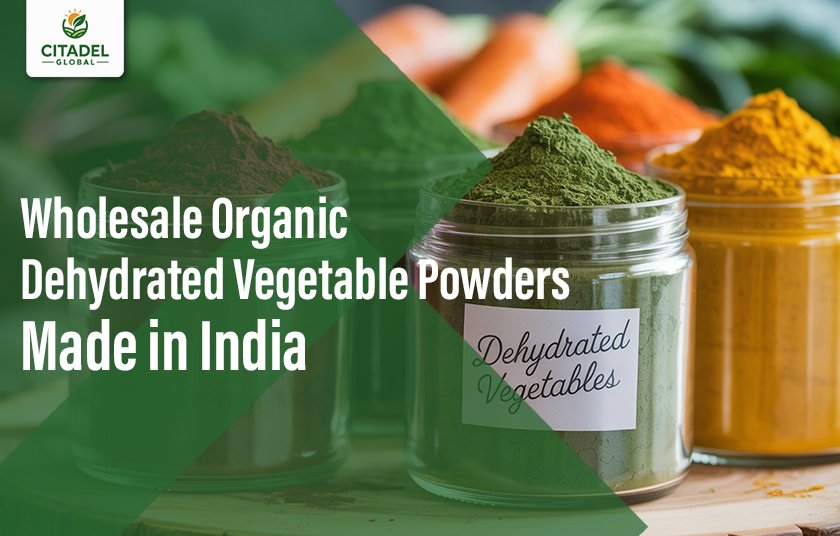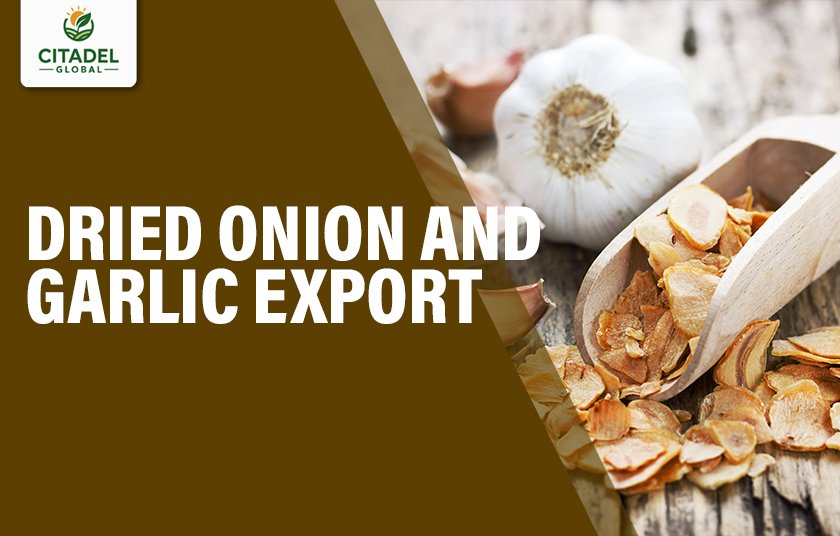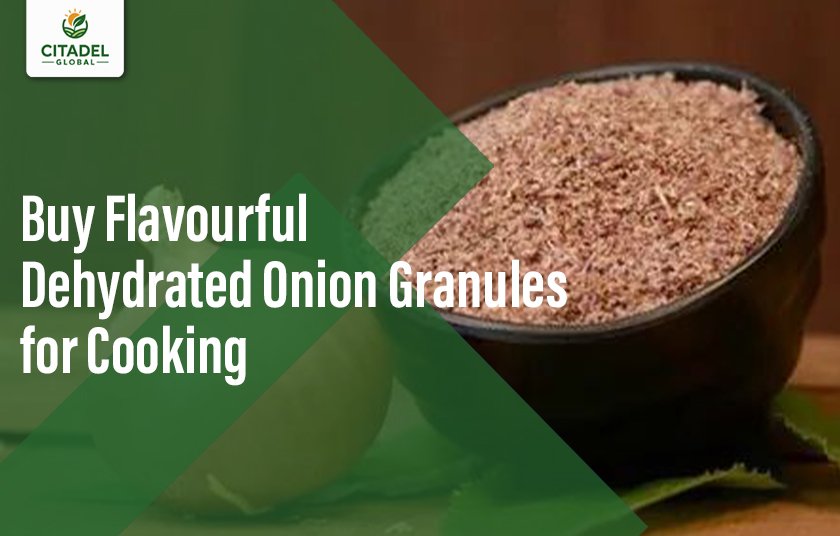


- By Admin
- Export & Compliance Keywords, Export standards for dried vegetables
Dried Onion and Garlic Export Guide: Packaging, Shelf Life & Storage Tips
Why Export Standards for Dried Vegetables Are Essential for Global Success
The global demand for dried vegetables is soaring, with exports exceeding 1.2 million metric tons in 2024 alone. Here, we will explore why adhering to export standards for dried vegetables is crucial—not just as a regulatory requirement but as a key to unlocking international markets. These standards continually evolve to ensure food safety, traceability, and sustainability. Understanding and meeting them can mean the difference between successful shipments and costly rejections, as over 30% of dried vegetable exports face setbacks due to non-compliance.
Let’s dive into what makes these standards indispensable for exporters aiming to thrive globally.
Mastering Dried Garlic Export Regulations: Avoid Costly Mistakes That Derail Shipments
Dried garlic export regulations differ widely across countries, reflecting varying consumer safety priorities. Key points include:
- The European Union enforces some of the strictest limits on pesticide residues and mycotoxins to protect health-conscious consumers.
- The U.S. Food and Drug Administration requires detailed documentation on traceability and product origin, increasing compliance complexity.
- According to the World Trade Organization, non-compliance with dried garlic export regulations has led to a 15% global shipment rejection rate over the past three years.
- Proactive product testing, certification, and real-time compliance monitoring through advanced laboratories have become essential tools for exporters to minimize risks and maintain buyer trust.
Understanding and mastering these regulations is crucial to avoid costly shipment delays and build lasting export success.
International Packaging Standards: Your First Line of Defense Against Quality Loss
Packaging innovations can extend shelf life and reduce quality degradation, especially when transporting dried onion and garlic across vast distances and diverse climates. A 2023 study by the Global Packaging Institute revealed that up to 20% of product quality loss in dried vegetables occurs due to inadequate packaging during transit.
Modern export packaging uses vacuum-sealed, multi-layered films to prevent oxygen and moisture ingress, while modified atmosphere packaging (MAP) replaces oxygen with inert gases to preserve freshness. Moreover, international packaging standards—such as ISO 22000 and ISO 9001—emphasize not just product protection but also sustainability, requiring biodegradable and recyclable materials that align with consumer expectations and regulations.
Proper packaging is more than preservation; it is a branding tool that enhances market perception and buyer trust.
Moisture Content Limits for Dried Onion: The Invisible Factor That Makes or Breaks Your Export
Moisture content is often overlooked yet remains the most critical parameter influencing dried onion’s stability, taste, and safety. Scientific research indicates that moisture above 10% creates a favorable environment for mold growth and mycotoxin development, both of which are immediate red flags for importers.
Regulatory bodies in Europe and North America strictly enforce moisture content limits for dried onion, and shipments exceeding these can face confiscation or mandatory recalls. The Food and Agriculture Organization’s recent statistics show that 12% of dried onion shipments fail moisture content requirements annually, resulting in economic losses exceeding $40 million globally.
Leading exporters now invest in precise moisture meters and employ drying technologies that ensure consistent compliance with these moisture content limits for dried onion, safeguarding both product integrity and export viability.
Storage Strategies That Prolong Shelf Life and Protect Your Investment
The importance of optimal storage for dried onions and garlic cannot be overstated, as improper storage causes spoilage, flavor loss, and significant value depreciation. Research by the Global Food Storage Association estimates that inefficient storage causes an average loss of 18% in dried vegetable stock value before export.
To minimize losses, best practices include:
- Maintaining a consistent temperature between 10°C and 15°C to slow enzymatic activity and fungal growth.
- Keeping relative humidity below 65% to prevent moisture absorption.
- Avoiding exposure to direct sunlight which accelerates oxidation and nutrient degradation.
- Employing palletized storage with adequate air circulation to prevent mechanical damage and moisture pockets.
Modern warehouses increasingly adopt climate-controlled and sensor-based monitoring systems to maintain these ideal conditions, demonstrating a clear link between investment in storage infrastructure and export success.
Emerging Trends Reshaping the Global Dried Vegetable Export Market
The dried onion and garlic export industry is undergoing rapid transformation fueled by shifting consumer preferences, technological breakthroughs, and sustainability imperatives. Some key trends include:
- The organic segment of dried onions and garlic has grown by over 25% in the past three years, driven by health-conscious consumers demanding chemical-free products.
- Smart packaging with embedded freshness indicators and QR codes providing transparency on origin and handling is becoming a differentiator in premium markets.
- Environmental sustainability has pushed exporters to adopt biodegradable packaging materials, with global demand for such solutions rising by 35% annually, according to the Sustainable Packaging Coalition.
- The rise of e-commerce platforms specializing in gourmet and ethnic foods has opened niche markets for dried vegetables, increasing export opportunities beyond traditional bulk buyers.
These trends underscore the need for exporters to innovate and adapt proactively to maintain relevance and competitive edge.
Global Market Dynamics and Challenges Impacting Dried Onion and Garlic Exports
Global supply chains remain vulnerable to geopolitical tensions, climate change, and pandemic-related disruptions. For instance:
- Extreme weather events in key growing regions of China and India—leading producers—have caused a 10-15% reduction in dried onion yields over the past two years.
- Rising fuel and freight costs, which have surged by more than 40% since 2021, directly impact export pricing and logistics efficiency.
- Regulatory changes, such as increased tariffs and evolving import documentation requirements in key markets like the EU and the U.S., add complexity and cost.
Exporters must adopt flexible sourcing strategies and invest in robust risk management systems to navigate these uncertainties successfully while ensuring full food safety for export.
Real Success Story: How Strategic Packaging and Compliance Opened New Doors
A mid-sized dried onion exporter in India faced repeated shipment rejections due to inconsistent moisture control and outdated packaging, risking their foothold in Europe. After revising their approach to:
- Implement vacuum-sealed, moisture-resistant packaging aligned with international packaging standards.
- Upgrade drying and moisture measurement technology for real-time compliance with moisture content limits for dried onion.
- Train staff on evolving export standards for dried vegetables and documentation accuracy.
The company witnessed a remarkable turnaround: a 40% increase in export volumes within 12 months and new long-term contracts in highly regulated European markets. Their story is a testament to how diligence in packaging and regulatory adherence can transform business trajectories.
Final Insights: Why Choosing the Right Partner Makes All the Difference
Exporting dried onions and garlic is a nuanced journey that demands expertise across compliance, packaging, storage, and market trends. Citadel’s comprehensive services combine industry knowledge and hands-on experience, guiding exporters through complex food safety for export regulations and helping optimize packaging and storage to maximize shelf life. For those looking to buy dried onion and garlic in bulk, partnering with a reliable expert ensures smoother transactions, compliance assurance, and competitive positioning in the global market.
Citadel Global remains the silent force behind many successful exporters, turning export challenges into opportunities and ensuring your business thrives amid evolving global demands.





